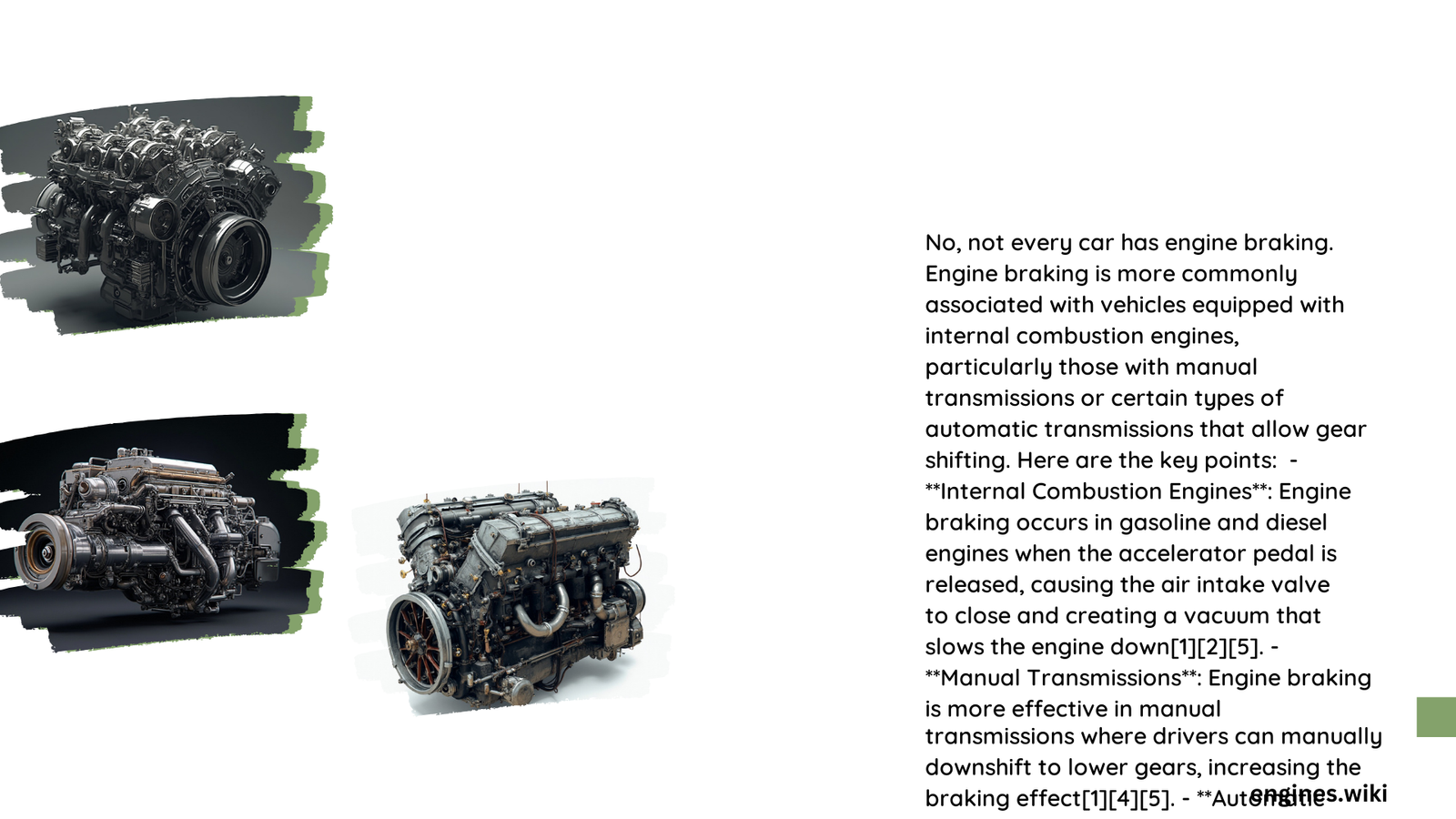Engine braking is a nuanced automotive mechanism where vehicles utilize internal engine resistance to slow down, varying dramatically across different vehicle types, transmission systems, and engine configurations. Not every car experiences engine braking equally, with diesel vehicles demonstrating more pronounced braking capabilities compared to standard gasoline-powered passenger vehicles.
What Exactly is Engine Braking?
Engine braking represents a mechanical process where a vehicle’s internal combustion engine generates resistance to slow down the vehicle without using traditional friction brakes. This phenomenon occurs when drivers release the accelerator pedal, creating opposing forces within the engine’s operational cycle.
Do All Cars Possess Engine Braking Capabilities?

Gasoline Engine Vehicles
| Vehicle Type | Engine Braking Effectiveness |
|---|---|
| Compact Cars | Low |
| Sports Cars | Moderate |
| Performance Vehicles | Higher |
Gasoline-powered vehicles typically exhibit minimal engine braking compared to diesel counterparts. The braking effect depends on several factors:
- Throttle valve closure
- Intake manifold vacuum generation
- Engine compression ratio
- Transmission type
Diesel Engine Vehicles
Diesel engines demonstrate superior engine braking capabilities through:
- Exhaust brake systems
- Compression release mechanisms
- Higher compression ratios
- Mechanical design favoring resistance generation
How Does Transmission Impact Engine Braking?
Manual Transmission Vehicles
- More pronounced engine braking
- Direct driver control through gear selection
- Enhanced mechanical resistance
Automatic Transmission Vehicles
- Limited engine braking
- Dependent on transmission programming
- Requires manual gear mode activation
Factors Influencing Engine Braking Effectiveness
Several critical elements determine a vehicle’s engine braking potential:
- Vehicle weight
- Engine displacement
- Compression ratio
- Driving conditions
- Transmission configuration
Technical Considerations for Engine Braking
Compression and Resistance
Engine braking fundamentally relies on creating resistance within cylinder chambers. When accelerator pressure decreases, air intake reduces, generating opposing mechanical forces.
Modern Automotive Trends
Contemporary automotive engineering explores advanced techniques:
- High Power Density (HPD) engine brakes
- Alternative fuel engine braking systems
- Electronic brake force distribution
Practical Implications
While not universal, engine braking provides significant advantages:
– Reduced brake wear
– Enhanced vehicle control
– Improved downhill descent management
– Energy conservation
Limitations and Exceptions
Two-Stroke Engines
Two-stroke engines face unique challenges with engine braking due to:
– Lubrication system complexities
– Reduced mechanical resistance
– Potential accelerated component wear
Expert Recommendations
Drivers seeking optimal engine braking should:
– Understand their specific vehicle’s mechanical characteristics
– Practice proper downshifting techniques
– Consult manufacturer documentation
– Consider vehicle-specific modifications
Technical Insights
Modern automotive engineers continuously develop sophisticated engine braking technologies, addressing limitations in traditional mechanical systems through advanced electronic interventions.
Key Takeaway
Not every car possesses identical engine braking capabilities. The mechanism varies significantly across vehicle types, requiring nuanced understanding and application.
